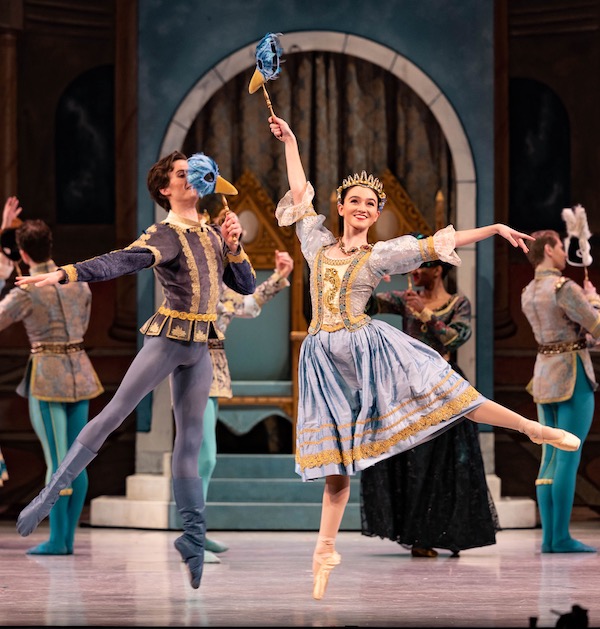Ballet West’s “Snow White” for young people proves an enjoyable show for all ages

In his program statement for Snow White, Ballet West artistic director Adam Sklute writes that the show was “created to introduce children and families to the joys of this magical art form.” Ballet’s West’s ballet mistress, Pamela Robinson-Harris choreographed this production in 2019 to her own selection of music from Grieg and Johann Strauss II as a part of the company’s quasi-educational Family Classics Series.
Returning four years after its premiere, Ballet West II’s Snow White is less a formal ballet than it is a crash course in artistic movement—scenes of traditional dance counter physical comedy and voiceover narration, all bolstered by one of the most ubiquitous narratives of all time.
In aiming for a younger audience, Snow White provides regular bouts of humor to keep things moving between more formal ballet numbers. The seven dwarves—played by a group of children from the Ballet West Academy—were an apparent audience favorite as they toiled about the stage with mock “old man” movements.
The star comedians of the night were BW II dancers Victor Galeana and William Lynch as the brothers Jakob and Wilhelm Grimm, respectively. In between dance scenes, they mimed out the action of the famous story to a pre-recorded narration as a Laurel and Hardy–esque duo. Their melodramatic recreations of love, betrayal, fear and death found them leaping into each other’s arms, throwing temper tantrums and engaging in all manner of exaggerated mimicry. Though exaggerated, the broad comedy clearly won the young crowd over.
The Brothers Grimm scenes play an important role in the production’s educational mission. Every few minutes, the duo emerges and narrates the succeeding scene of dance, framing the context before showing the audience the movement-based interpretation.
For young viewers unfamiliar with dance, a distinct, one-to-one connection between textual narrative and visual narrative can provide a key to unlocking the meaning of the art form. Having the Brothers describe the eternal nature of Snow White and the Prince’s rapturous love before the couple (performed by Stella Birkinshaw and Jonas Malinka-Thompson on opening night) engage in a sweeping pas de deux forges a literal connection between the abstractions of movement and feeling.
The most successful usages of the narrations occur in the scenes where the Vain Queen faces off with her magic mirror. Where Snow White is good, the dwarves are funny and the prince is regal, the Vain Queen is troubled, envious and altogether more psychologically complex.
Kye Cooley represents this complicated villain with grandiosity and forcefulness in her movements reminiscent of the arch glamor of classic Disney villains. Snow White introduces a number of thematic elements—dance as romance, dance as comedy, dance as spectacle—but here, Cooley’s expressiveness and the more modern-leaning wriggles of the abstract representations of her mirror’s voices (Elijah Hartley, Kennedy Sheriff, Rebecca Trockel) delineate more gnarled, abstract emotions.
Birkinshaw and Malinka-Thompson do well in their starring roles, shining especially in their first duet after the latter awakens the former from her near-death sleep. The couple possess a stillness and levity as they engage in patient, fluid movements and endure strained pauses to emphasize the power of their romantic connection.
Most of Snow White is youthful and fast-paced, and this number offers a rare glimpse at a more elegant temperament in the short program. On the grandiose front, The full Ballet West II ensemble makes its most notable appearance in the concluding wedding scene: Awash in shimmering, sparkle-laden costumes, the group drove the finale toward showmanship with synchronized twirling, leaping and general gallivanting.
Snow White isn’t the technical marvel of other Ballet West productions, but it accomplishes its educational goal effectively through its spotlight on younger talent. Ballet West’s continual prioritization of education—in their performances schools and in their performances themselves—affords unique opportunities such as this, where a lesson in art theory weaves its way into a still-enjoyable viewing experience for adults and veteran balletomanes.
Snow White continues with two more performances 2 p.m. and 7 p.m. Saturday. (The evening performance is narrated in Spanish). balletwest.org